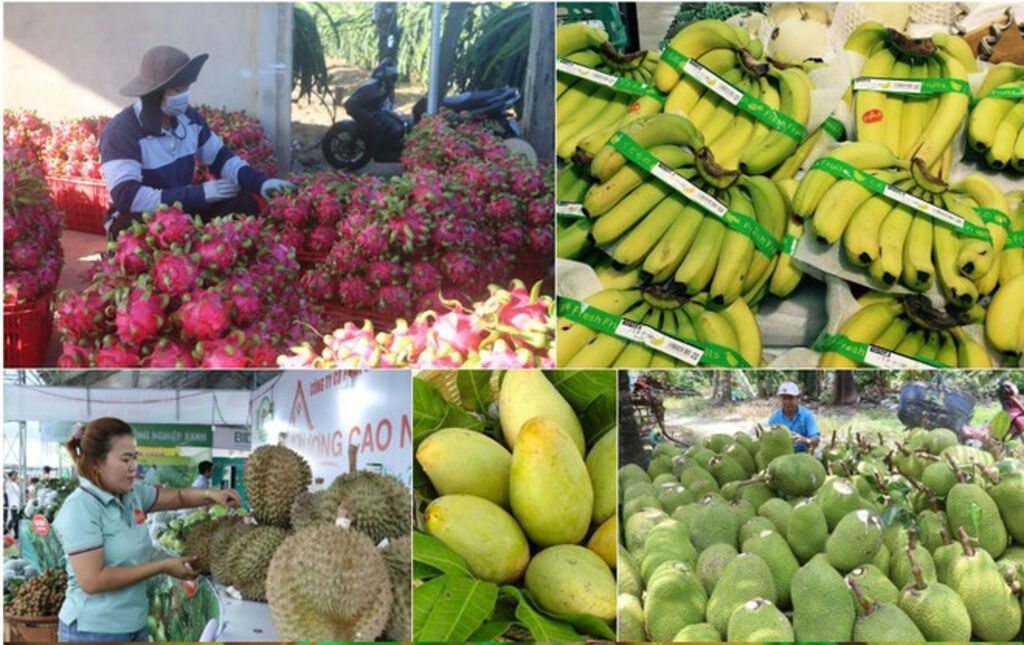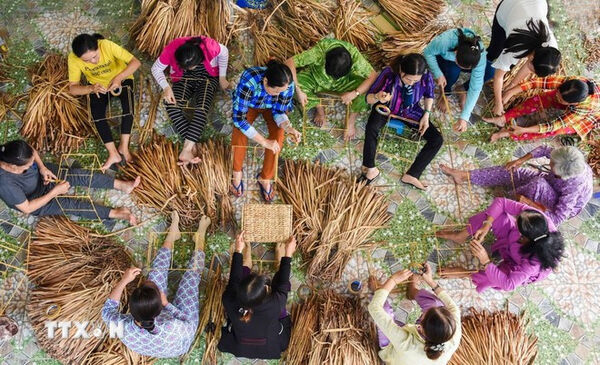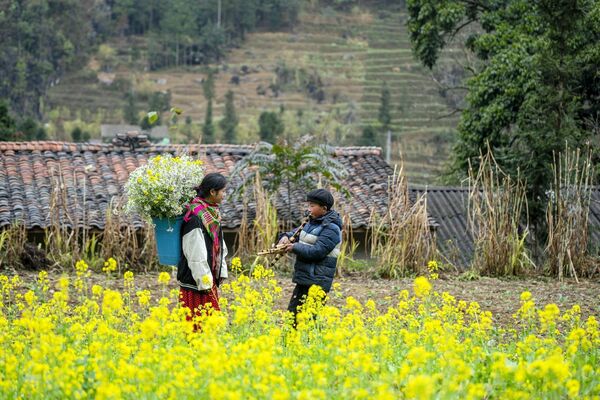 |
| Vietnam earns over 7 billion USD from fruit and vegetable exports in the first ten months of this year, up 14% year on year (Photo: VNA) |
Hanoi (VNA) – Vietnam’s fruit and vegetable exports were estimated at over 7 billion USD in the first 10 months of 2025, up 14% year on year.
The figure raises prospects of surpassing 8 billion USD for the first time this year and reaching 10 billion USD in the near future, as the country enhances quality, expands markets and adapts to new import regulations, particularly from China.
According to the Vietnam Fruit and Vegetable Association (Vinafruit), the sector’s growth has been driven by strategic fruits such as durian, banana, mango, jackfruit, coconut and pomelo. Thanks to the strong recovery of durian exports, total fruit and vegetable shipments have risen sharply, said Vinafruit Secretary-General Dang Phuc Nguyen, adding that durian exports alone may exceed 3 billion USD this year.
Vietnamese fruits are increasingly entering high-end markets. Durian exports have recorded double-digit growth in destinations such as the US, Canada and Japan. Most notably, Vietnamese pomelos were recently approved for import into Australia — a breakthrough demonstrating Vietnam’s ability to meet stringent food safety standards.
“The entry into Australia marks an important milestone and could open doors to other demanding markets,” Nguyen said, adding that exporters also hope to soon ship pomelos to China, where demand is strong.
However, sustaining growth requires stricter quality control. Nguyen Phong Phu, Technical Director of Vina T&T Group, warned that some farming areas still use outdated methods and non-compliant pesticides, posing contamination risks. He noted that importing countries strictly monitor pesticide residues, so even a slight excess can lead to shipment rejection, damaging the industry’s reputation.
China remains a key market, importing 17–18 billion USD worth of fruits and vegetables annually, with Vietnam contributing about 4–5 billion USD. With geographical proximity and low logistics costs, Vietnam has considerable potential to expand its market share — provided it ensures traceability and meets China’s rigorous food safety and quarantine standards.
Developing standardised raw material zones is seen as crucial for sustainable growth. Nguyen said the national pilot scheme for certified production zones during the 2022–2025 period is a timely initiative.
To enter markets like Australia, the US, the EU or the Republic of Korea, consistency and traceability are essential, he emphasised, noting that farming zones must be properly planned, use the right varieties and comply with VietGAP and GlobalGAP standards.
Still, small-scale production and limited infrastructure remain bottlenecks. “Each importing country has different regulations. Without proper training, even minor errors can cause entire shipments to be rejected,” Nguyen cautioned.
Amid these challenges, China’s new Decree No. 280, which will take effect on June 1, 2026, replacing Decree 248, marks a significant regulatory shift.
According to Ngo Xuan Nam, Deputy Director of the Vietnam Sanitary and Phytosanitary Notification Authority and Enquiry Point (SPS Vietnam), the decree introduces a risk-based management approach, classifying products and exporters by risk level and aligning regulations with international practices.
He advised Vietnamese companies to review their registration on China’s Import Food Enterprise Registration (CIFER) system, as major changes in legal status or operations could result in immediate cancellation of registration codes. Before the new rules take effect, businesses are urged to raise production standards, enhance traceability and improve risk management, with strict compliance in planting and packing facility codes remaining essential./.










